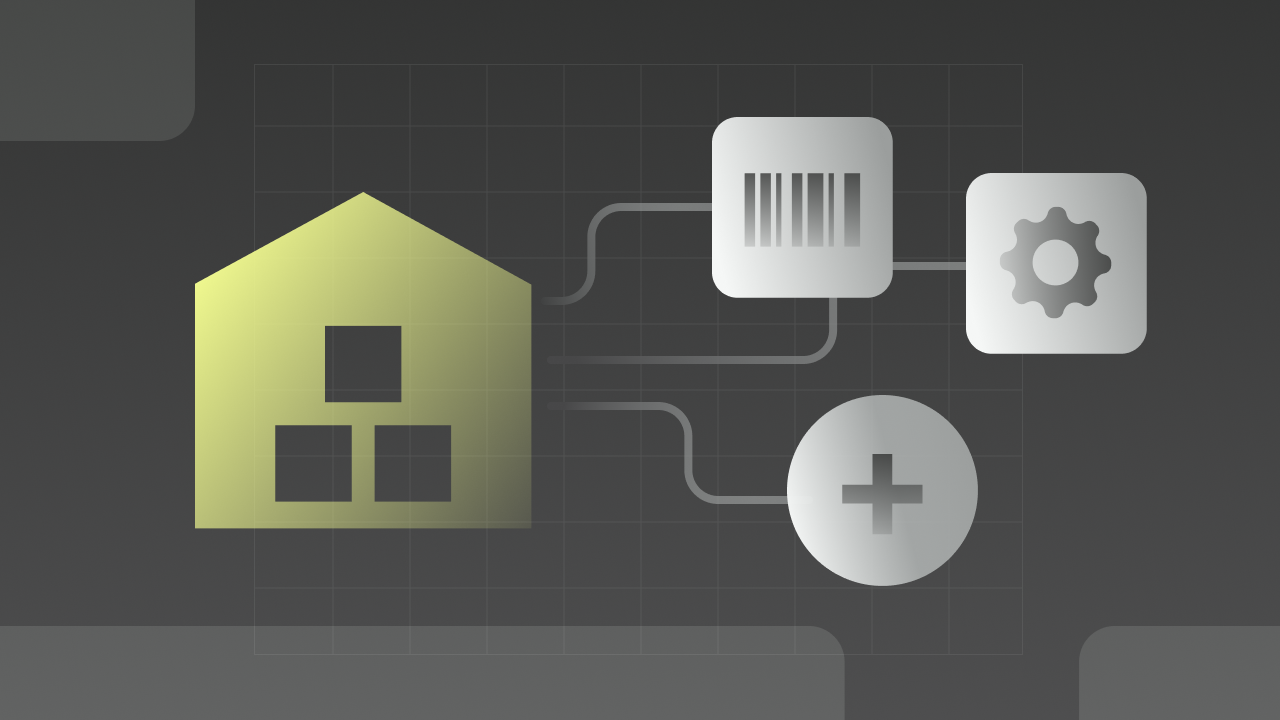
Key Takeaways
Automation, powered by AI, brings precision and efficiency to the critical function of inventory management.
- What it does: The core benefit is highly accurate demand forecasting, where AI analyzes not just historical sales but also external factors. Based on these forecasts, the system can automate the entire procurement process by generating purchase orders.
- The business impact: This end-to-end automation minimizes the risk of stockouts and overstocking, improves cash flow, and ensures the right products are in the right place at the right time.
- The key advantage: It takes the guesswork out of a complex process.
The Great Deception in Inventory Management
For decades, operations and technology leaders have been sold a compelling vision of inventory management automation. The pitch was that a sophisticated automated inventory management software package would eliminate manual effort, grant perfect visibility, and optimize stock levels, turning inventory from a liability into a finely tuned strategic asset. So, companies invested millions in advanced automated inventory management systems.
And yet, what is the reality in most large enterprises today? The warehouse and supply chain teams are still drowning in spreadsheets, emails, and manual data entry. The “automation” we bought is, for the most part, a fancy dashboard. It can tell us what our inventory levels are, but it does very little to automate the actual work of managing that inventory. The system can flag a low stock level, but it can’t autonomously execute the complex process required to replenish it. This is the great deception of traditional inventory management automation: we have been sold a system of record, not a system of action.
The Anatomy of Manual Work Your System Doesn’t See
To understand why your current automated inventory system is failing, you have to look beyond the dashboard and see the invisible web of manual processes that your team performs every single day. The true source of inefficiency is not in counting stock; it’s in the gaps between your systems.
Consider the “simple” process of replenishing a part when stock runs low. An effective automating inventory management strategy must handle this entire workflow:
- The Alert: Your inventory management system generates a low-stock alert. This is where most automation ends.
- The Manual Swivel-Chair: A human employee sees the alert. They swivel their chair to another system—the ERP—to manually create a purchase requisition.
- The Communication Breakdown: They generate a purchase order (PO) and email it as a PDF to the vendor. They then wait for an emailed confirmation, which they must manually read to find the ETA.
- The Data Entry Grind: They swivel back to the inventory system to manually enter the expected delivery date.
- The Financial Disconnect: When the vendor’s invoice arrives (likely as another PDF email attachment), a different person in accounts payable has to manually match it against the PO and the goods receipt note from the warehouse. This “three-way match” is a notoriously painful, error-prone process.
This is not an automated process. It is a series of manual tasks held together by human effort. This is the core problem that traditional inventory management automation was never designed to solve. This is where the real inventory control system benefits are being lost.
Agentic AI: The Engine Your Dashboard Is Missing
To truly conquer this complexity, leaders need a new class of technology. Agentic AI represents a fundamental paradigm shift for inventory management automation. It moves beyond dashboards and rigid bots to provide an intelligent engine that can execute entire end-to-end business processes, based on instructions provided in plain English.
Instead of just flagging a low stock level, an AI agent can be instructed to handle the entire workflow. A supply chain manager, without writing any code, can define the process:
“When inventory for Part #XYZ falls below 50 units, create a purchase order for 100 units from our primary supplier, Acme Corp. Email the PO and monitor their response for an order confirmation and ETA. Once confirmed, update the expected delivery date in our inventory system and notify the receiving department.”
The AI agent then uses its reasoning capabilities to navigate the different applications—the inventory system, the ERP, the email client—to get the job done. Crucially, it’s built for the real world. When an exception occurs—the vendor emails back that the part is on backorder—the agent doesn’t just fail. It can be taught to understand the email’s context and automatically initiate a PO with a secondary supplier, or to flag the exception for human review. This creates an automated inventory control system that is not just automated, but truly autonomous and resilient.
Kognitos: The First True Automated Inventory Management System
Kognitos is the industry’s first neurosymbolic AI platform, purpose-built to deliver this new, intelligent model of automation. Kognitos is not another dashboard or a better bot. It is a comprehensive platform that automates your most critical and complex operational processes using plain English.
The power of Kognitos lies in its unique neurosymbolic architecture. This technology combines the language understanding of modern AI with the logical precision required for enterprise-grade operations. This is non-negotiable for managing critical assets. It means every action the AI takes, from issuing a PO to approving an invoice, is grounded in verifiable logic, is fully auditable, and is completely free from the risk of AI “hallucinations.” This provides the governance and control that CIOs and CFOs demand from their automated inventory management software.
With Kognitos, you can finally achieve true inventory management automation:
- Automate the Entire Procure-to-Pay Cycle: From stock alert to vendor payment, Kognitos can manage the entire workflow, including the complex three-way match between POs, goods receipts, and invoices.
- Understand and Act on Unstructured Data: Kognitos can read and interpret data from any source, including the PDF invoices, packing slips, and email confirmations that break traditional automation.
Empower Your Operations Team: Your supply chain and inventory experts are the ones who know the process best. Kognitos allows them to build, manage, and adapt automations themselves, without waiting on IT. You can explore many inventory management system examples on our site to see this in action.
Unlocking the Real Inventory Management System Advantages
When you move from task automation to process automation, the inventory management system advantages become strategic, not just operational.
- Radical Efficiency and Lower Costs: By automating the entire workflow, you eliminate thousands of hours of manual work, reduce errors, and can run a much leaner, more efficient operation.
- A Bulletproof Audit Trail: Every step an AI agent takes is logged and tied to an English-language instruction. This creates a perfect, easy-to-understand audit trail for every transaction, dramatically simplifying compliance and financial audits.
- Strategic Empowerment: By freeing your team from the endless cycle of manual data entry and firefighting, you empower them to focus on high-value strategic work: optimizing supply chains, negotiating with vendors, and improving forecasting. This is the most important of all inventory control system benefits.
Discover the Power of Kognitos
Our clients achieved:
- 97%reduction in manual labor cost
- 10xfaster speed to value
- 99%reduction in human error
True automated inventory management is the use of intelligent technology to automate the entire end-to-end business process related to inventory. This goes far beyond simply tracking stock levels. It includes automating workflows like procurement (procure-to-pay), order fulfillment (order-to-cash), and the financial reconciliation of inventory.
While traditional systems work like a database with a dashboard, a modern automated inventory system works like an intelligent agent. A business user defines a process in plain English (e.g., “When stock is low, order more from this vendor”). The AI agent then executes that entire process across all necessary systems (inventory, ERP, email), handling exceptions and learning from human guidance along the way.
The goal is to move beyond simple tracking to achieve true process automation. Investing in an advanced system allows you to dramatically reduce manual effort and errors, lower operational costs, create a fully auditable system of record for compliance, and empower your operations team to focus on strategic initiatives rather than manual data entry.
When evaluating automated inventory management software, look beyond the dashboard features. Ask critical questions about its ability to automate processes across your existing systems:
- Can it read and understand unstructured documents like PDF invoices and emails?
- Can it handle complex, multi-step workflows like the three-way match?
- Can my business users manage and adapt the automation themselves, or does it require developers?
- How does it handle exceptions without breaking?
The future is autonomous and interconnected. The biggest trend is the rise of agentic AI platforms that can manage the entire supply chain and financial lifecycle of inventory. This will lead to “continuous reconciliation,” where inventory records are always in sync with financial reality, and a move towards self-optimizing supply chains where AI agents can make intelligent decisions about sourcing and logistics with minimal human oversight.








